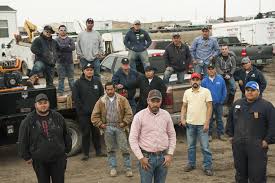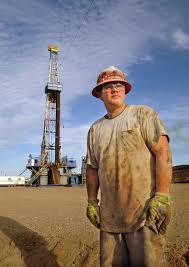
North Dakota, where Oklahoma’s Continental Resources Inc. led the state’s massive oil production, has already seen more than 2,000 workers lose their jobs statewide in the coronavirus pandemic and the oil market crash. Now one state official estimates another 6,000 will lose their jobs in the coming months.
The prediction comes from Lynn Helms, North Dakota minerals director who expects upwards of 8,000 workers to be unemployed “before things start turning around.”
“The rig count has dropped dramatically — we have lost about 40% of our drilling rigs,” Helms said. Rigs, which drill new wells, are a key source of employment, and the number of rigs is an indicator of industry health according to a report by the Star-Tribune newspaper.
The North Dakota rig count now stands at 35, down from 52 last month and 55 in January, according to state data released Tuesday.
Based on conversations with industry executives, Helms said the rig count will likely drop at least into the 20s if not the teens. The count has not been below 20 since the 2008 financial crisis.

Once a well is drilled, it’s flushed with torrents of water, sand and chemicals — another employment-heavy task. Frack crews active in North Dakota have already dropped by 25% and are likely to fall another 25%, Helms said in a Tuesday conference call with reporters.
The spread of COVID-19 has hammered global demand for oil and gasoline. A price war between Russia and Saudi Arabia made the situation worse. But even an agreement to end that battle last week — with huge production cuts — has done little to boost oil prices.
West Texas Intermediate — the benchmark U.S. crude oil price — was trading Tuesday at below $21 a barrel, near an 18-year low and well below the level needed for most shale-oil producers to make money. WTI was around $60 a barrel in early January.
North Dakota is the nation’s largest petroleum-producing state after Texas, and oil and gas is one of its two bedrock industries, along with agriculture. The industry also is the source of the state’s best-paying jobs, with an average hourly wage of $51, according to third-quarter 2019 data from North Dakota Job Service.
More unemployment claims have been filed in North Dakota during the past three weeks than in all of 2019, said David Flynn, a professor at the University of North Dakota who tracks the state’s economy.
Jobless claims have been disproportionately higher in the state’s oil patch. The oil, gas, mining and quarrying sector — the bulk of which is petroleum-related — accounts for about 5% of North Dakota’s total employment. But it accounted for 7% of unemployment claims during the three weeks ending April 4, state data shows.
During that time, 2,537 initial employment claims were filed in oil, gas and mining — about 12% of average employment in that sector over the preceding year.
If layoffs eventually hit 8,500 — as Helms indicated is possible based on conversations with industry executives — nearly 40% of the state’s oil-, gas- and mining-sector jobs would be at least temporarily wiped out.
Flynn said that if the oil crisis goes for six to 10 months, he expects a decline of 8-10% decline in North Dakota’s gross domestic product.
The state’s budget will take a hit, too, with a reduction in tax revenue of as much as 12%, he said. That figure includes direct taxes on oil and gas producers, as well as sales taxes lost from a reduction in commerce through the industry’s supply chain.
North Dakota oil and gas production actually rose in February as the COVID crisis had yet to take hold, state data released Tuesday show. But production should fall steeply in the coming months.
Not only are oil companies cutting back on new wells, they have rushed to shutter higher-cost existing wells. Helms said the number of operating oil wells in North Dakota — at 16,000 when March started — fell by 3,600 over the month, cutting out 175,000 barrels per day of production. During April’s first two weeks, 1,000 more wells were stoppered, taking out another 85,000 barrels per day of oil.
North Dakota and other oil states are running out of places to put the oil anyway. “Our storage capacity at the head of the pipelines is almost full,” Helms said.
In response to the oil crash, North Dakota regulators recently waived penalties for drilled but uncompleted wells. By doing so, the state is allowing operators to reduce production by putting off fracking operations for longer than normally allowed.
The oversupply of oil is so dire that regulators in Texas — home to the largest U.S. shale fields — are mulling forced reductions, conducting a hearing on the issue Tuesday. Such an action in Texas hasn’t been taken since the 1970s. Oklahoma regulators have been asked to do the same and set a hearing on the request for May.
“North Dakota hasn’t looked seriously at that yet,” Helms said of mandatory production cuts.
Source: Star Tribune



